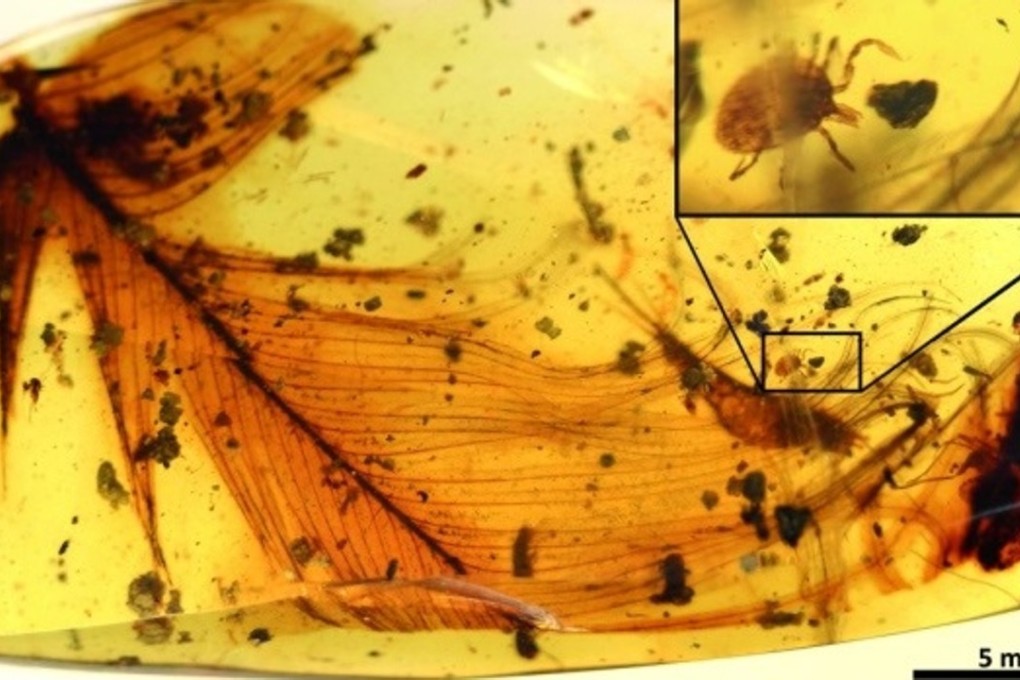Ancient ticks engorged with dinosaur blood are found trapped in amber
One of the ticks was even clutching a dinosaur feather

Ticks, the notorious disease-spreading parasites, have been making life miserable far longer than human beings have walked the Earth. Even dinosaurs felt their blood-sucking wrath.
Scientists on Tuesday described a number of ticks, including a previously unknown species that they named after the fictional vampire Dracula, entombed in chunks of amber from Myanmar dating back 99 million years, including one still grasping a feather apparently from a feathered Cretaceous Period dinosaur.
One of the ticks belonging to the species Deinocroton draculi, meaning “Dracula’s terrible tick,” was found so engorged with blood that it increased its size eight-fold. If that sounds familiar, it is the premise of the Jurassic Park books and movies in which DNA extracted from the guts of dinosaur-biting mosquitoes trapped in amber was used to recreate dinosaurs.

“It seems that modern techniques are unable to extract DNA, or at least sufficiently well-preserved DNA, from amber inclusions (organisms trapped in amber). DNA does not stand the passing of time, of millions of years, when entombed in amber,” said palaeontologist Ricardo Pérez-de la Fuente of the Oxford University Museum of Natural History, one of the researchers in the study published in the journal Nature Communications.
Amber, fossilised tree resin, has provided a remarkable window into the past, with numerous types of small animals and plants preserved in superb detail. In this case, the amber offered the first direct evidence of a parasite-host relationship between ticks and feathered dinosaurs. These ticks also are among the oldest examples of these parasites in the fossil record.
